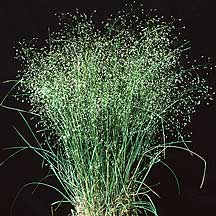| Ricegrass | |
|---|---|
 | |
| Oryzopsis hymenoides | |
| Scientific classification | |
| Kingdom: | Plantae |
| Clade: | Tracheophytes |
| Clade: | Angiosperms |
| Clade: | Monocots |
| Clade: | Commelinids |
| Order: | Poales |
| Family: | Poaceae |
| Subfamily: | Pooideae |
| Supertribe: | Stipodae |
| Tribe: | Stipeae |
| Genus: | Oryzopsis Michx., 1803 |
| Type species | |
| Oryzopsis asperifolia | |
| Synonyms [1] | |
| |
Oryzopsis is a genus of Chinese and North American plants in the grass family. [2] [3] [4] Species from this genus are commonly called ricegrass. [5]
The name alludes to the resemblance between this genus and true rice, Oryza.
- Species [1] [6]
- Oryzopsis asperifolia Michx. – roughleaf ricegrass [7] - Canada (all 10 provinces plus Yukon + Northwest Territories), United States (Northeast, Great Lakes, Black Hills, Rocky Mountains) [8]
- Oryzopsis chinensis Hitchc. - China
- Oryzopsis contracta (B.L.Johnson) Schltr. - Colorado, Wyoming, Montana
- Oryzopsis exigua Thurb. - Wyoming
- Oryzopsis hendersonii Vasey - Oregon, Idaho, Washington state
- Oryzopsis holciformis (M.Bieb.) Hack. (syn. Piptatherum holciforme (M.Bieb.) Roem. & Schult.) - Israel
- Oryzopsis hymenoides (Roem. & Schult.) Ricker ex Piper - western North America from British Columbia + Alberta to California + New Mexico
- Oryzopsis pungens (Torr.) Hitchc. - Canada, northern United States
- Oryzopsis swallenii C.L.Hitchc.& Spellenb. - Idaho, Wyoming
- formerly included [1]
numerous species once regarded as members of Oryzopsis but now considered better suited to other genera: Achnatherum Achnella Anemanthele Eriocoma Nassella Piptatherum Piptatheropsis Piptochaetium Ptilagrostis Stipa Stiporyzopsis